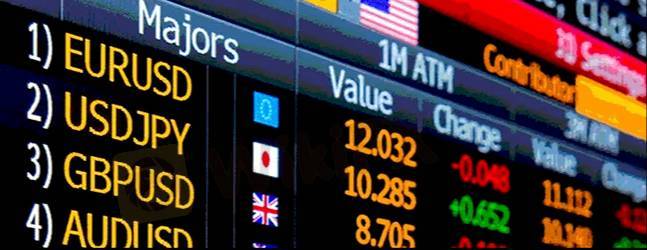
2024-11-13 19:40
IndustryHow to analyze forex fundamental data?
Analyzing forex fundamental data requires attention to economic indicators, central bank policies, geopolitical events, and market sentiment. Here are some key fundamental factors and their role in the forex market:
1. Economic Indicators
GDP (Gross Domestic Product): GDP growth reflects the health of the economy. A strong economy often attracts investment, leading to currency appreciation.
Inflation Rate (CPI/PPI): High inflation may prompt the central bank to raise interest rates to control prices, which typically attracts capital inflows and strengthens the currency.
Employment Data (such as Non-Farm Payrolls, Unemployment Rate): Employment data reflects economic vitality. Low unemployment and strong job growth are generally favorable for the currency.
Trade Balance: A trade surplus generally strengthens the currency because exports bring in foreign exchange, increasing demand for the domestic currency.
2. Central Bank Policies
Interest Rate Decisions: Interest rates are one of the most important drivers in the forex market. Central banks adjust interest rates to regulate economic activity. Higher interest rates typically attract external capital, supporting currency appreciation.
Monetary Policy Statements: Central bank meeting minutes, statements, and economic outlooks often provide hints about future policies, such as quantitative easing (QE) or tightening measures.
3. Geopolitical Events
International Trade Tensions: Trade disputes and tariff policies can affect economic relations between countries, influencing currency values.
Political Instability: Uncertainty from elections, wars, or social unrest can lead to currency volatility.
International Alliances and Sanctions: Alliances and sanctions between countries can impact trade and capital flows, thus affecting currency values.
4. Market Sentiment
Risk Aversion and Risk Appetite: During periods of low market sentiment, investors tend to flock to safe-haven currencies like the US dollar, yen, and Swiss franc. In contrast, during periods of high risk appetite, high-yield currencies like the Australian dollar and New Zealand dollar are favored.
Capital Flows: Investor asset allocation (e.g., whether funds are flowing into equities or bonds) also impacts the supply-demand balance in the forex market.
5. News and Event-Driven Factors
Breaking News: Sudden events, such as central bank officials' speeches or unexpected economic data movements, can cause significant volatility in exchange rates.
Macroeconomic Cycles: The relative strength of currencies may change depending on whether different countries' economic cycles are synchronized or not.
Analysis Steps
1. Collect Data: Use an economic calendar to track important global economic data releases and monitor central bank meetings, speeches, etc.
2. Interpret Market Impact: Assess the short-term and long-term effects of the data based on market sentiment and past reactions.
3. Combine with Technical Analysis: Fundamental analysis can provide a basis for trend direction, while technical analysis can help determine entry and exit points.
By combining these factors, one can develop a more comprehensive understanding of currency movements, especially regarding the market's reaction after data releases.
Like 0
Kevin Cao
Trader
Hot content
Industry
Event-A comment a day,Keep rewards worthy up to$27
Industry
Nigeria Event Giveaway-Win₦5000 Mobilephone Credit
Industry
Nigeria Event Giveaway-Win ₦2500 MobilePhoneCredit
Industry
South Africa Event-Come&Win 240ZAR Phone Credit
Industry
Nigeria Event-Discuss Forex&Win2500NGN PhoneCredit
Industry
[Nigeria Event]Discuss&win 2500 Naira Phone Credit
Forum category

Platform

Exhibition

Agent

Recruitment

EA

Industry

Market

Index
How to analyze forex fundamental data?
 Hong Kong | 2024-11-13 19:40
Hong Kong | 2024-11-13 19:40Analyzing forex fundamental data requires attention to economic indicators, central bank policies, geopolitical events, and market sentiment. Here are some key fundamental factors and their role in the forex market:
1. Economic Indicators
GDP (Gross Domestic Product): GDP growth reflects the health of the economy. A strong economy often attracts investment, leading to currency appreciation.
Inflation Rate (CPI/PPI): High inflation may prompt the central bank to raise interest rates to control prices, which typically attracts capital inflows and strengthens the currency.
Employment Data (such as Non-Farm Payrolls, Unemployment Rate): Employment data reflects economic vitality. Low unemployment and strong job growth are generally favorable for the currency.
Trade Balance: A trade surplus generally strengthens the currency because exports bring in foreign exchange, increasing demand for the domestic currency.
2. Central Bank Policies
Interest Rate Decisions: Interest rates are one of the most important drivers in the forex market. Central banks adjust interest rates to regulate economic activity. Higher interest rates typically attract external capital, supporting currency appreciation.
Monetary Policy Statements: Central bank meeting minutes, statements, and economic outlooks often provide hints about future policies, such as quantitative easing (QE) or tightening measures.
3. Geopolitical Events
International Trade Tensions: Trade disputes and tariff policies can affect economic relations between countries, influencing currency values.
Political Instability: Uncertainty from elections, wars, or social unrest can lead to currency volatility.
International Alliances and Sanctions: Alliances and sanctions between countries can impact trade and capital flows, thus affecting currency values.
4. Market Sentiment
Risk Aversion and Risk Appetite: During periods of low market sentiment, investors tend to flock to safe-haven currencies like the US dollar, yen, and Swiss franc. In contrast, during periods of high risk appetite, high-yield currencies like the Australian dollar and New Zealand dollar are favored.
Capital Flows: Investor asset allocation (e.g., whether funds are flowing into equities or bonds) also impacts the supply-demand balance in the forex market.
5. News and Event-Driven Factors
Breaking News: Sudden events, such as central bank officials' speeches or unexpected economic data movements, can cause significant volatility in exchange rates.
Macroeconomic Cycles: The relative strength of currencies may change depending on whether different countries' economic cycles are synchronized or not.
Analysis Steps
1. Collect Data: Use an economic calendar to track important global economic data releases and monitor central bank meetings, speeches, etc.
2. Interpret Market Impact: Assess the short-term and long-term effects of the data based on market sentiment and past reactions.
3. Combine with Technical Analysis: Fundamental analysis can provide a basis for trend direction, while technical analysis can help determine entry and exit points.
By combining these factors, one can develop a more comprehensive understanding of currency movements, especially regarding the market's reaction after data releases.
Like 0
I want to comment, too
Submit
0Comments

There is no comment yet. Make the first one.

Submit
There is no comment yet. Make the first one.